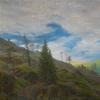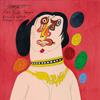12th Century Drawings on Mirrors, 19th Century Landscapes and Courtesans among Highlights of JADA Asia Week Exhibitions
- NEW YORK, New York
- /
- August 24, 2010

A robust panorama of traditional Japanese fine arts will be on view at the galleries of six leading dealers this Fall, including rarely seen 12th century Kyozo, or mirrors bearing drawings of gods, imperial screens once part of the furnishings of Edo Castle, and strikingly modern works from the Taisho Period (1912-26).
The Japanese Art Dealers Association is a not-for-profit group whose members include leading New York galleries and private dealers who are dedicated to the fine arts of pre-Modern Japan. JADA promotes high standards of scholarship and connoisseurship in the many fields of Japanese art. JADA was founded in 2002. For more information, please visit www.jada-ny.org.
___________________________________________
Kokon Biannual: Fall '10
September 13 - October 12, 2010
Mon. - Fri., 10:00 AM - 6:00 PM
Koichi Yanagi Oriental Fine Arts
17 E. 71st St., 4th Fl. • New York, NY 10021 • 212.744.5577
Koichi Yanagi Oriental Fine Arts' fall exhibition, Kokon Biannual: Fall '10, features works of art representing nearly all major eras of Japanese history, from the Heian through the late Edo period.
The Fall 2010 exhibition includes major paintings, a calligraphic work by a preeminent Zen prelate, majestic folding screens, and enchanting ceramics, one from the Heian and the other from the Edo period. A sumptuous pair of folding screens attributed to Kano Eitoku (1543-1590) and known to have been part of the furnishings of Edo Castle - the present-day Imperial Palace in Tokyo - was once in the possession of one of the Tokugawa shoguns. It depicts a ceremonious occasion during which a Chinese emperor receives tribute bearers from abroad, a truly fitting subject for screens in a shogunal collection. Kano Eitoku was a progenitor of the monumental Momoyama style, and the attribution was made and inscribed on the screens by Tan'yū (1602-1674), Eitoku's grandson, the most powerful artist of the Edo period.
A painting executed in a delicate, almost miniaturist style on a shikishi (a type of paper “card”, almost square in shape, that was often used for calligraphy), represents a scene from the Genji monogatari, Japan’s most celebrated classic. Although unattributed when acquired, Mr. Yanagi arranged to have the backing sheet removed from this painting, revealing the seal of the Tosa school master Mitsuyoshi (1539-1613).
___________________________________________
Images of the Floating World: Paintings, Prints, and Illustrated Books
September 14 - 17 and 20 - 24, 2010
10:00 AM to 5:00 PM
Sebastian Izzard LLC Asian Art
17 East 76th St., 3rd Fl. • New York, NY 10021 • 212.794.1522
info@izzardasianart.com • www.izzardasianart.com
Sebastian Izzard LLC will feature a selection of paintings, woodblock prints, and illustrated books in their annual exhibition of fine ukiyo-e to be held during Asia Week in New York this September. The show will feature a range of images of beauties, actors, landscapes, and bird and flower subjects from the 18th and 19th centuries.
Paintings by Edo period masters such as Kaigetsudō Dohan, Tōsendō Rifu, Hosoda Eishi, and Utagawa Toyokuni will be exhibited and will include a rare painting by an amateur artist of the late 18th century, Aoki Masatada, depicting Hanaogi IV, dating from ca. 1794. A fine example of Utamaro's "The Silver World" (Gin Sekai), complete with original covers and title slip, will highlight the group of illustrated books. Among the prints is a very rare first edition of Hiroshige's color woodblock triptych "Night View of the Sumida River," depicting two geisha of the Azumaya (the name in hiragana on the maid's lantern) and their attendant strolling on the embankment at night beneath flowering cherry.
___________________________________________
Kyozo: Images of the Unity of Shinto and Buddhism
September 10 - 30, 2010
Tues. - Sat., 11:00 AM - 5:00 PM
Art of Zen Monks
September 10 - October 30, 2010
Tues. - Sat., 11:00 AM - 5:00 PM
Mika Gallery
595 Madison Ave., 8th Fl. • New York, NY 10022 • 212.888.3900
info@mikagallery.com • www.mikagallery.com
Mika Gallery will be holding two exhibitions of pre-Modern Japanese art. Kyozo: Images of the Unity of Shinto and Buddhism is a form of art that has not been widely exhibited in the United States. Kyozo are drawings made on the surface of a mirror. The subjects of the drawings are a fusion of representations of the gods of the ancient religions of Japan (Shinto) and Buddhist deities who were introduced to Japan from overseas. The ancient art form is based on Honjisuijaku, a theory that provided for the conciliation of Shinto and Buddhist deities. The exhibition includes ten select works, mainly from the 12th century Heian period.
Art of Zen Monks presents works of art by the Zen painter Tozen Hosetsu and the Zen Master Hakuin. Works by Hosetsu, who is also well known as Sesshū Tōyō's disciple, will include paintings of landscapes and Dharma. Works by Hakuin will include calligraphies and paintings. Together with the paintings by the monks, a sculpture of Manjusri, in the form of a training monk (Kamakura period), which was originally sited in the meditation hall of a temple will be exhibited.
___________________________________________
Screens and Scrolls of the Taisho Period
September 15 - November 19, 2010
Mon. - Fri. 12:00 PM to 5:00 PM and by appointment
Erik Thomsen Asian Art
23 E. 67th St. • New York, NY 10065 • 212.288.2588
info@erikthomsen.com • www.erikthomsen.com
Erik Thomsen Asian Art will launch its 25th Anniversary Year and inaugurate its new gallery with an exhibition of Taisho Period (1912-1926) art, Screens and Scrolls of the Taisho Period, an exhibition that presents more than a dozen newly discovered screens and scroll paintings.
Among the highlights of the exhibition is a monumental pair of screens by Ishizaki Koyo, Vying Peacocks,which measures 32 feet across.
While short in duration, the influential Taisho Period (1912-26) witnessed a flowering of the arts in Japan. It was a period of great wealth, especially for the Zaibatsu industrialists, and art was eagerly collected. Often over-sized exhibition pieces with a bold design, they are made using the finest materials and mountings. Unlike the preceding Meiji Period (1868-1912), during which art was made mostly for export to the West, art in the Taisho Period was made for the Japanese and rarely left Japan. This new trend continued in the following Showa Period (1926-89) until World War II. Since few Taisho and early Showa screens left Japan, little was known about them in the West until the acclaimed 2002 exhibition Taisho Chic at the Honolulu Academy of Arts. Screens and Scrolls of the Taisho Period will focus on more than a dozen-many newly discovered-screens and scrolls of the Taisho period.



270x400_c.jpg)








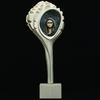


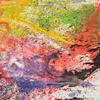
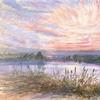


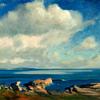



100x100_c.jpg)
